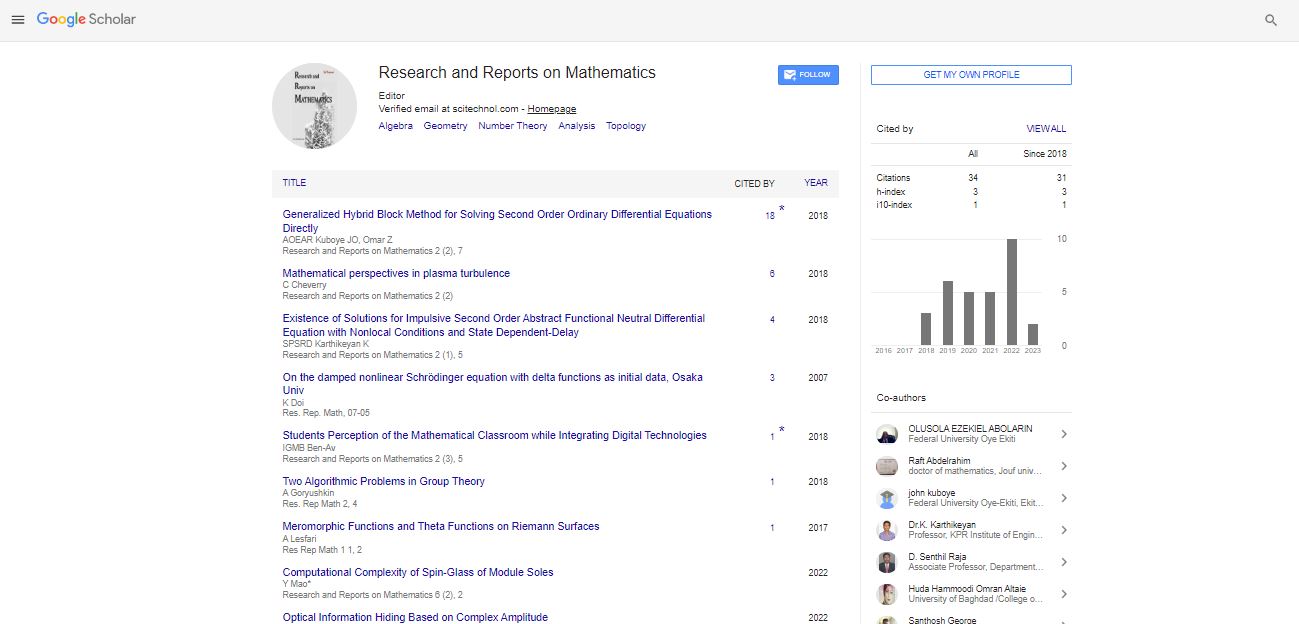Opinion Article, Res Rep Math Vol: 8 Issue: 1
Quantum Computing's Impact on Modern Cryptographic Protocols
Gang Tae*
Department of Mathematics and Computer Engineering, University of North Carolina, Raleigh, USA
- *Corresponding Author:
- Gang Tae
Department of Mathematics and Computer Engineering,
University of North Carolina,
Raleigh,
USA
E-mail: gangtae123@gmail.com
Received date: 27 October, 2023, Manuscript No. RRM-23-118494;
Editor assigned date: 30 October, 2023, PreQC No. RRM-23-118494 (PQ);
Reviewed date: 13 November, 2023, QC No. RRM-23-118494;
Revised date: 11 January, 2024, Manuscript No. RRM-23-118494 (R);
Published date: 18 January, 2024, DOI: 10.4172/rrm.1000222
Citation: Tae G (2024) Quantum Computing's Impact on Modern Cryptographic Protocols. Res Rep Math 8:1.
Description
Quantum computing, with its unprecedented processing power, poses a significant threat to modern cryptographic protocols. This manuscript explores the potential vulnerabilities introduced by quantum computers and the ongoing efforts to develop post-quantum cryptographic solutions. We examine the principles of quantum computing, discuss its impact on widely-used cryptographic algorithms, and provide insights into the development of quantumresistant encryption methods. In a rapidly evolving digital landscape, understanding quantum computing's influence on cryptography is crucial for ensuring the security of sensitive information.
Quantum computing represents a paradigm shift in computation, harnessing the principles of quantum mechanics to perform calculations that were previously inconceivable for classical computers. This breakthrough technology has the potential to break widely-used cryptographic protocols, which rely on the intractability of certain mathematical problems. The advent of quantum computing has the potential to disrupt modern cryptography. Traditional cryptographic methods, which rely on the difficulty of certain mathematical problems, are at risk of being rendered obsolete by quantum computers. The Shor and Grover algorithms, in particular, could efficiently break widely used encryption techniques.
Quantum computing principles
At its core, quantum computing relies on qubits, which can exist in multiple states simultaneously due to superposition, enabling quantum computers to process vast amounts of data in parallel. Quantum entanglement further enhances computational efficiency.
Impact on cryptography: Shor's algorithm and Grover's algorithm
Shor's algorithm is a quantum algorithm that efficiently factors large numbers, a problem at the heart of RSA encryption. The algorithm's efficiency threatens the security of data encrypted with classical public-key cryptography.
Grover's algorithm speeds up the search of unsorted databases, which has implications for symmetric-key encryption. It reduces the time required to break encryption keys.
The quest for security
To mitigate the risks posed by quantum computing, the cryptographic community is actively researching and developing postquantum cryptographic algorithms. These algorithms aim to resist attacks from quantum computers while maintaining the security and efficiency of classical cryptographic protocols.
Lattice problems form the basis of many post-quantum cryptographic proposals, offering mathematical challenges that appear resistant to quantum attacks.
Cryptosystems based on error-correcting codes provide a promising approach to post-quantum security.
This category explores cryptographic schemes based on the difficulty of solving multivariate polynomial equations.
Isogeny-based systems leverage the mathematics of elliptic curves and offer a potential alternative to traditional public-key cryptography.
Hash-based cryptographic schemes rely on the computational infeasibility of finding collisions in hash functions.
The transition to post-quantum cryptography presents several challenges, including the need for standards, integration into existing systems, and balancing security with computational efficiency.
Conclusion
Quantum computing's potential to disrupt modern cryptographic protocols necessitates proactive measures. While the development of post-quantum cryptography is underway, organizations and individuals should be prepared for a transition to quantum-resistant encryption methods. As quantum technology advances, the security landscape will continue to evolve, emphasizing the need for ongoing research and vigilance in safeguarding sensitive data in a quantum era.
As quantum computing continues to advance, it is imperative that researchers, cryptographers, and policymakers collaborate to address the challenges and opportunities presented by this technological shift. The field of post-quantum cryptography holds promise for safeguarding the confidentiality and integrity of data and communications in an increasingly uncertain digital landscape. The future of cryptography depends on our ability to adapt to the quantum threat and develop quantum-resistant cryptographic protocols. In this rapidly changing digital environment, understanding the intersection of quantum computing and cryptography is essential. It is not only a matter of protecting sensitive information but also of maintaining trust in secure communication and data storage. As quantum computing advances, the quest for secure and resilient encryption methods remains an ongoing and paramount endeavor.
 Spanish
Spanish  Chinese
Chinese  Russian
Russian  German
German  French
French  Japanese
Japanese  Portuguese
Portuguese  Hindi
Hindi 